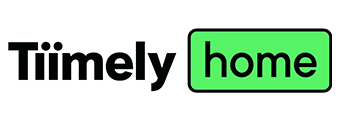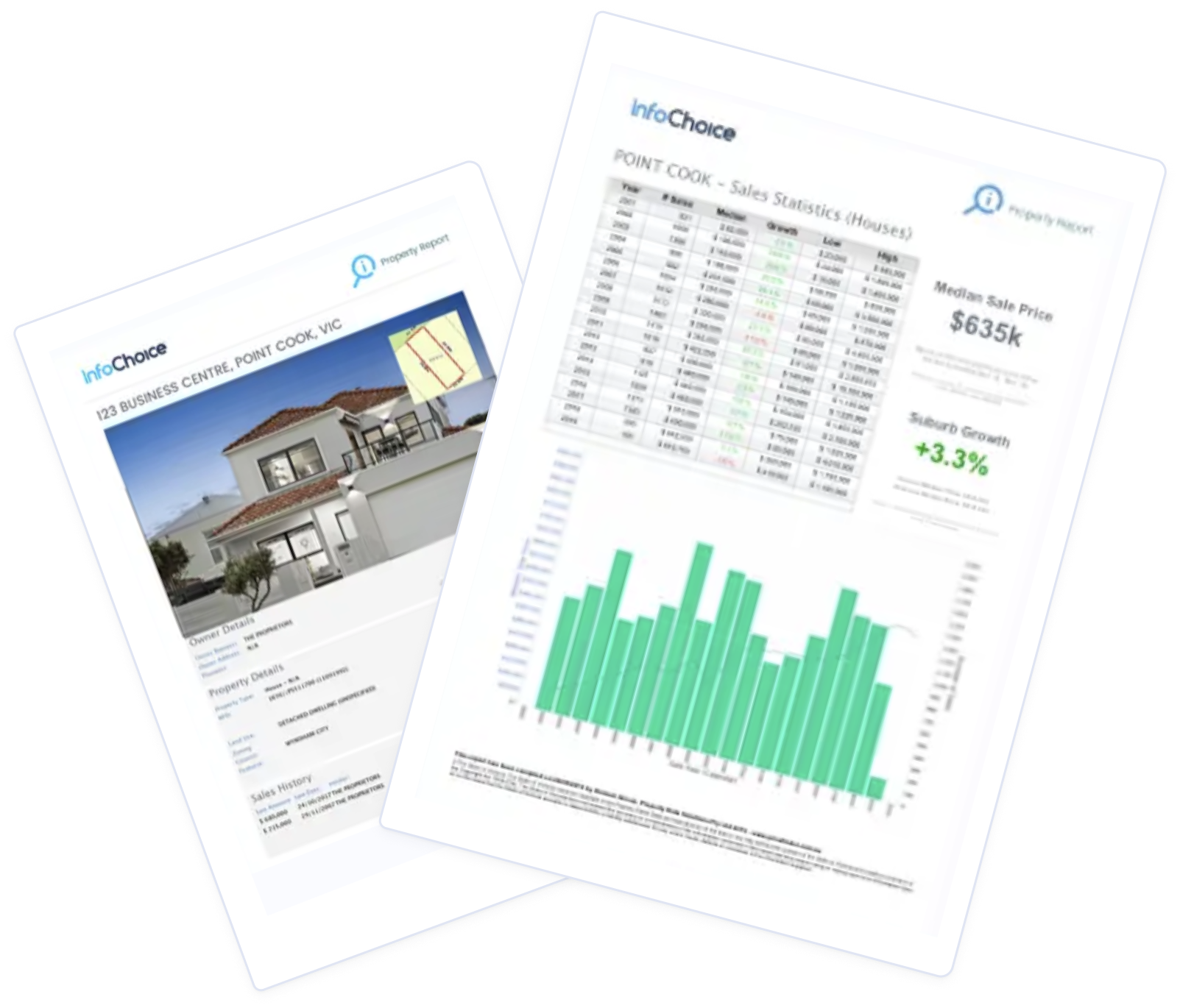
Sky-high rents and fierce competition left her with few options. And as if stretched affordability issues are not enough, being a single mother - and a pet owner to boot - also didn't help Kara's approval odds, especially when applicants like her are often seen as "risky" due to perceived financial vulnerability.
"Tenants are discriminated against for having pets or children, or being single parents," stated a 2021 report by the Australian Housing and Urban Research Institute (AHURI).
According to AHURI, this "cherry picking" of tenants is used to protect rental income and minimise management problems on the assumption that certain tenants would be, in fact, problematic.
Landlords generally favour dual-income households over single parents, a bias that has resulted in single mothers being three times more likely to experience homelessness compared to the national average, per a survey by Victoria's Council of Single Mothers and their Children (CSMC).
So rather than pour her money into a system stacked against her, Kara carved her own path.
"I have been house sitting/renting a friend's holiday house and staying with family until our caravan, which I only just bought, is renovated and ready to travel full time with my son and our cat," she shared with InfoChoice.
She didn't just walk away from a turbulent past; she walked away from the rental trap, too.
"I saw it as an opportunity to make the most rather than paying a ridiculous amount of rent - that is, if we ever got approved for a rental to begin with."
Kara is not alone.
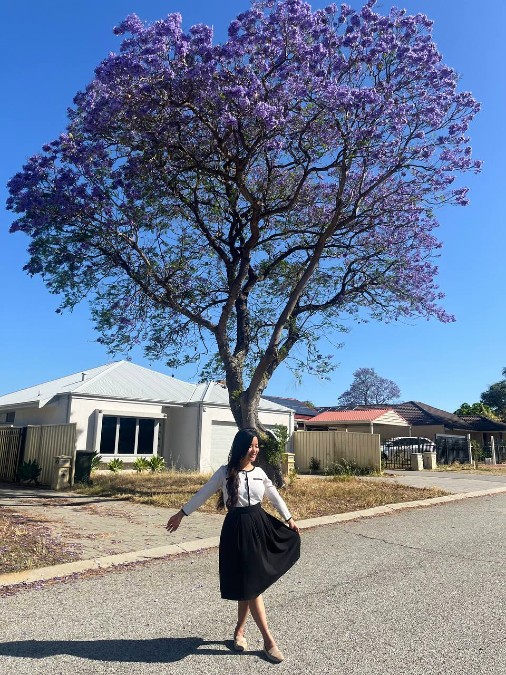
Jacqueline, 33, was able to save on rent costs while travelling in Perth by doing housework for her hosts. (Image supplied)
Renting in Australia: A system under pressure
Nearly one in three Australian households rents.
The 2021 Census revealed 30.6% were renters, the majority of whom lease from private landlords, according to data from the Australian Institute of Health and Welfare (AIHW).
It doesn't mean, however, that the "Australian Dream" of becoming a homeowner has died for these individuals. For many, renting is simply the more viable option.
"We have had more people become renters, or have to choose to be a renter due to rising house prices and interest rates," Dr Diaswati Mardiasmo told InfoChoice.
Dr Mardiasmo, chief economist at PRD Real Estate, said saving up for a 20% deposit and servicing high mortgage repayments is "too far-fetched" for many people, given that the proportion of median family income to meet average loan repayments continues to go up.
"Latest data is 50.1% in December quarter 2024, up from 48.7% in September quarter 2024 and 47.9% in December quarter 2023," Dr Mardiasmo pointed out.
"In comparison, the proportion of family income required to meet rent payments was 24.7% in December quarter 2024, 24.9% in September quarter 2024, and 24.0% in December quarter 2023.
"So not only does renting take up less of the median family income, it's also more stable compared to servicing an average loan."

Dr Diaswati Mardiasmo (Image supplied)
The rise of rental stress
However, this doesn't mean renters in Australia are going through life unencumbered by stress. Data from the ABS and property analytics firm Cotality (formerly CoreLogic) reveals rents have risen by around 30-40% in many capital cities since mid-2020.
Meanwhile, wages only grew by 3-4% within the same period.
Cotality estimates that rents have surged by 36.1% nationally since the onset of Covid. That's equivalent to an additional $171 a week or $8,884 a year - at the median level - that households had to fork over to ensure they have a roof over their heads.
This coincides with the average household size shrinking to historically low levels, inducing demand for more than 100,000 dwellings, according to RBA research - adding to pressure on rental markets.
"With rents increasing rapidly and wages not keeping up, rental stress has become widespread in most capital cities," said Anne Crarey, executive general manager of property services at Little Real Estate.
While renting offers a flexible option, it has also become a source of anxiety.
A January 2024 survey by InfoChoice found that seven out of 10 Australians are under "rental stress", which means they are paying more than 30% of their gross income to cover their lease.

Stress plagued many of those renting in Victoria, Tasmania, and Western Australia. But in terms of intensity, Queensland took the cake for the state with the most stressed renters.
Property expert Anissa Cavallo agreed on the survey findings, highlighting that rental stress now affects over 40% of low-income households.
"That's a significant shift," she said.
"And it's not just low-income renters anymore, middle-income households are being squeezed out of metro markets too."
House prices becoming more out of reach for many doesn't help ease the strain on the rent supply.
If the situation seems dire, research from Cotaility published in May 2025 uncovered a new reality that'll further strain the already tight rental market.
The analytics firm found over a third of homes across Australia are now valued at $1 million or higher.
Data going back 10 years shows the portion of dwellings valued at $1 million or more has risen from 9.7% in April 2015 to 34.4% as of April 2025, a series high.
"The rate of homeownership has gradually declined over time, particularly among younger, low-income households where income cannot keep pace with growth," said Eliza Owen, head of research at Cotality.
With one-mill homes becoming the norm, not only has the average age of buyers increased, Ms Owen said even wealthy households are stuck renting for longer, which further increases competition for low-income tenants.
In fact, for someone like Kara, a single parent, a 2024 report found only 1.8% of rental listings are affordable for her in such a way that wouldn't put her under rental stress.
It's even worse for retirees on the age pension and single persons receiving JobSeeker payment, who can only afford 0.2% and 0%, respectively, of the total listings.
Is there a rent crisis in Australia?
All industry experts and researchers we asked were in agreement in saying that there is indeed a rent crisis in Australia.

Experts (clockwise from top left) Ketaki Sharma, Anissa Cavallo, Arjun Paliwal, and Anne Crarey agree Australia has a rent crisis. (Images supplied)
And if you think it only persists in big cities, you'd be sorely mistaken. Recent studies show rental growth is increasing much faster in regional areas than in the capitals, 4.41% vs 3.52%, per Cotality's Home Value Index in April 2025.
"This tight rental market is impacting not just the cities but also regional areas that once offered more affordable options," Ms Cavallo said.
Property watchers believe Australia's rent crisis isn't letting up anytime soon, especially considering it's a problem influenced by multiple factors.
"Australia's rental market isn't broken by accident - it's the result of inadequate support from policy, planning, and economic management," said Ketaki Sharma, founder and CEO of Algorithm Research.
According to Ms Sharma, there are five key forces fuelling the dumpster fire that is Australia's rental market.
1. Chronic housing undersupply
"For decades, Australia has underbuilt its way into trouble. Housing construction has simply failed to keep pace with demand, and the result is a market that's been starved of affordable options."
According to Housing Australia, the country is staring at a supply gap of nearly 200,000 dwellings by 2027 - a sharp jump from earlier projections.
2. Population growth is on overdrive
"In 2022-23 alone, Australia added 624,000 new residents - equivalent to dropping both Canberra and Darwin into the housing queue at once. This trend is expected to continue, implying a ballooning demand for housing."
3. The planning and zoning maze
"Even when there's political will to build, bureaucratic aspects like zoning rules, planning approvals, and local resistance to density (under the guise of preserving 'neighbourhood character') create a development chokehold."
The Urban Development Institute of Australia estimates that this regulatory red tape has left the country short of 400,000 dwellings in urban areas.
4. Tax policy tilting the market
Ms Sharma opined the housing policy Down Under has long been skewed in favour of investors, not first home buyers or renters.
"Generous tax perks like negative gearing and capital gains tax discounts have encouraged speculative buying, driving up prices and squeezing renters further," she said.
5. Construction costs are through the roof
Finally, she said, the post-pandemic surge in building costs - up 40% since 2020 - along with labour shortages, material delays, and higher interest rates have turned many planned projects into financial non-starters.
"Without bold reforms - rethinking tax incentives, cutting red tape, accelerating supply, and investing in affordable housing - we will likely remain stuck in this rent trap," Ms Sharma warned.
How are renters dealing with the rent crisis?
Besides moving back home with family, which has led to an increase in multigenerational homes in Australia, many renting individuals like Kara are finding creative ways to put a roof over their heads amidst this crisis.
Read Also: The Rise of Boomerang Kids in Australia
A growing number of renters in Australia are "exploring alternative living arrangements such as house sitting or using caravans and converted vans", according to Arjun Paliwal, CEO and head of research at InvestorKit.
"If supply remains tight and affordability continues to be a challenge, it's likely we'll see more people considering flexible or non-traditional housing options," Mr Paliwal added.
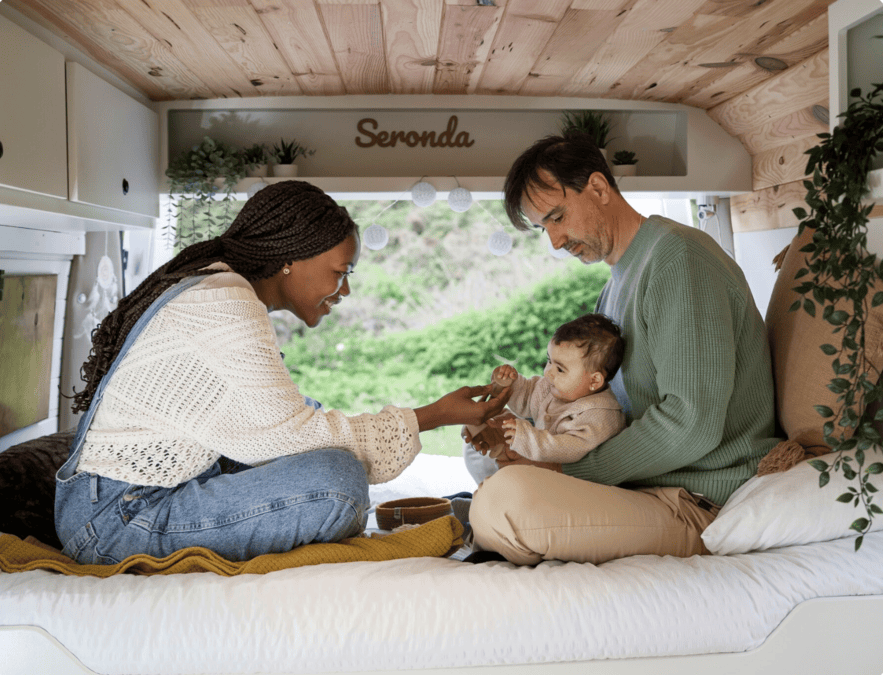
Living in cars or caravans
The housing insecurity and escalating living costs have led to a growing number of Australians sleeping rough, including in cars and caravans.
The ABS 2021 Census recorded 58,155 people living in caravans on census night. This, however, included individuals who purposefully chose caravan living as a lifestyle and those compelled by housing affordability issues, with the latter being considered as experiencing homelessness.
And while there are many financial and lifestyle benefits of living in a mobile home - lower costs of living and freedom to travel full-time being some of them - it's not without its set of challenges.
Vulnerability to the harmful effects of weather events and limited access to amenities can reduce the quality of life. And another obvious reason, according to Dr Mardiasmo, is that "not every place has a caravan park that offers long-term options".
Co-living or communal living
Sharing a home with roommates with whom you can split the rent and other living costs has long been an effective solution in the face of high rents. But another trend is becoming popular in Australia - instead of a, say, two-bedroom apartment, people are living in multigenerational compounds.
"In my experience as a builder, more and more people, both families and young professionals, are choosing innovative, rent-free living options that put an emphasis on community and sustainability," Zzone Homes CEO Marco Manazzone shared with InfoChoice.
According to Mr Manazzone, this ranges from multigenerational compounds with communal facilities to off-grid, solar-powered tiny homes on rural plots or family land.
One particular project they worked on in Victoria involved five families who pooled their resources to create a shared living compound.
"Each family had their own compact, self-contained dwelling, but they shared a communal garden, tool shed, laundry area, and a multi-use hall that doubled as a dining space and co-working hub," he related.
"The project was designed to offer privacy and community at once, and it's a strong example of how Australians are rethinking housing, especially in regional areas, to combat the rent crisis and live more sustainably."
While the upfront cost of a basic, high-quality off-grid tiny home is nothing to scoff at - between $60,000 and $85,000, per Mr Manazzone - the cost savings can be significant when compared to paying more than $700 a week in rent in Sydney or Melbourne. Of course, it also goes without saying that it costs way less than the current median home price of $825,000.
"Surprisingly, a lot of clients consider this to be a permanent lifestyle change. People are embracing the independence, ease, and financial control that these homes provide; it's no longer just a band-aid solution," Mr Manazzone said.
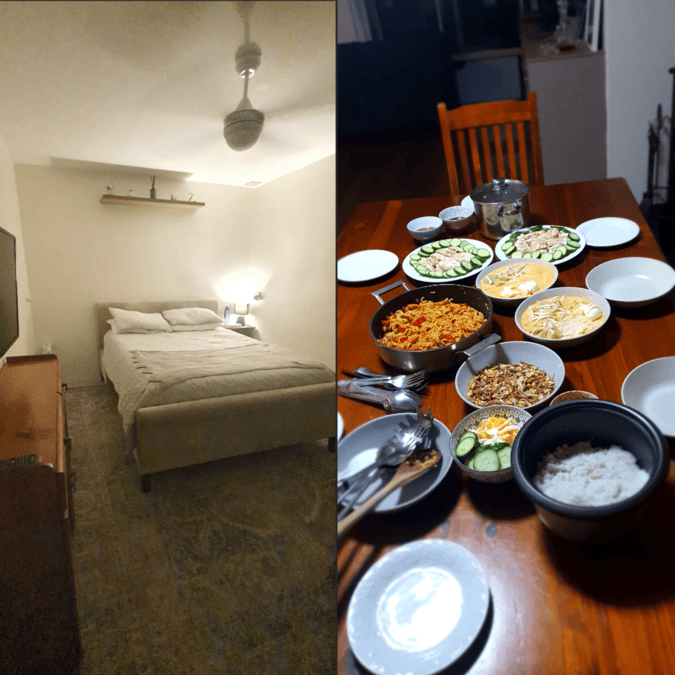
Jacqueline's room (left) in her host's house which she paid for by doing a few hours of housework and cooking per day. (Images supplied)
House sitting / pet sitting
Jacqueline, 33, has travelled in five different countries, including 75 days in Australia, where she was able to save on accommodation costs in exchange for doing housework.
While in Perth, she received a free room by doing four hours of chores and cooking each day for a family. The rest of her time was spent exploring and living her digital nomad lifestyle.
Jacqueline was able to do this through the Abroadly platform, which offers access to budget accommodation options, with some travellers paying for their stays by helping around the home of their hosts.
And while it's generally marketed as a way to travel more affordably, by saving on accommodation, such a living arrangement where individuals "house sit" has become another option to save on rent costs.
House sitters typically look after a variety of properties, from small apartments in the city to larger homes in the suburbs, living there free of charge or at low costs in exchange for caretaking duties - usually entail taking care of pets left at home - while the homeowners are away.
This arrangement can range from a few days to several weeks or months, which could translate to thousands in savings.
Much like other alternative living arrangements, house sitting is an option that also comes with a few drawbacks.
For one, house sitting is often an informal agreement and doesn't come with legal tenancy rights, which means sitters can be asked to leave at any time. Written terms are strongly advised when entering this arrangement.
There is also the issue of misaligned expectations from hosts, especially around pet care routines or house rules, expecting more than they've outlined. Thus, it is vital to iron everything out before you are left with the responsibility of taking care of someone's home and everything inside it.
Trust and safety concerns can also be a hurdle; that's why house sitters recommend using dedicated platforms (e.g., TrustedHouseSitters, MindMyHouse, etc.) that connect homeowners and sitters.
These platforms typically have extended networks of homeowners looking for sitters, vetting both parties to ensure security.
*Full name withheld upon request
| Lender | Home Loan | Interest Rate | Comparison Rate* | Monthly Repayment | Repayment type | Rate Type | Offset | Redraw | Ongoing Fees | Upfront Fees | Max LVR | Lump Sum Repayment | Extra Repayments | Split Loan Option | Tags | Features | Link | Compare | Promoted Product | Disclosure |
|---|---|---|---|---|---|---|---|---|---|---|---|---|---|---|---|---|---|---|---|---|
5.19% p.a. | 5.54% p.a. | $2,742 | Principal & Interest | Fixed | $0 | $350 | 80% | |||||||||||||
5.29% p.a. | 5.58% p.a. | $2,773 | Principal & Interest | Fixed | $248 | $350 | 70% | |||||||||||||
5.29% p.a. | 5.34% p.a. | $2,773 | Principal & Interest | Fixed | $0 | $0 | 80% | |||||||||||||
5.29% p.a. | 5.50% p.a. | $2,773 | Principal & Interest | Fixed | $10 | $470 | 90% | |||||||||||||
4.84% p.a. | 5.58% p.a. | $2,635 | Principal & Interest | Fixed | $0 | $1,000 | 70% | |||||||||||||
4.95% p.a. | 5.15% p.a. | $2,669 | Principal & Interest | Fixed | $0 | $0 | 90% |
Header and other in-text photos by Freepik


